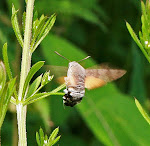A long-standing ambition to see the scarce and local Chequered Skipper butterfly was finally achieved yesterday with a 600+ mile round-trip to western Scotland. Long since exinct from all of their former southern England localities they can still be found locally in suitable habitat within a 50 km radius of Fort William.
Glasdrum Wood, a nature reserve on the shores of Loch Creran, is such a place managed for the butterfly and where an area of cleared woodland below overhead power lines has provided an especially ideal habitat. These skippers are fast-flying and very difficult to pick out against the similarly-coloured background of faded grasses and reeds. They are also small and equally difficult to locate when at rest. Nevertheless several were seen and photographed today.They are an early season, single-brooded butterfly whose flight period is complete by mid-June and often earlier. One seen was well-worn suggesting it had already been on the wing for a few weeks.
A few kilometres to the west of Glasdrum, two more were seen on the flowery verge of a disused railway line. They are apparently especially attracted to bluebells or other blue-coloured flowers (such as Bugle, Ground Ivy) of which there are plenty within the area.
.jpg)
.jpg)
.jpg)
.jpg)
.jpg)
.jpg)
.jpg)
.jpg)
.jpg)
.jpg)
.jpg)
.jpg)
.jpg)
.jpg)
.jpg)
.jpg)
.jpg)
.jpg)
.jpg)
.jpg)
.jpg)
.jpg)



















